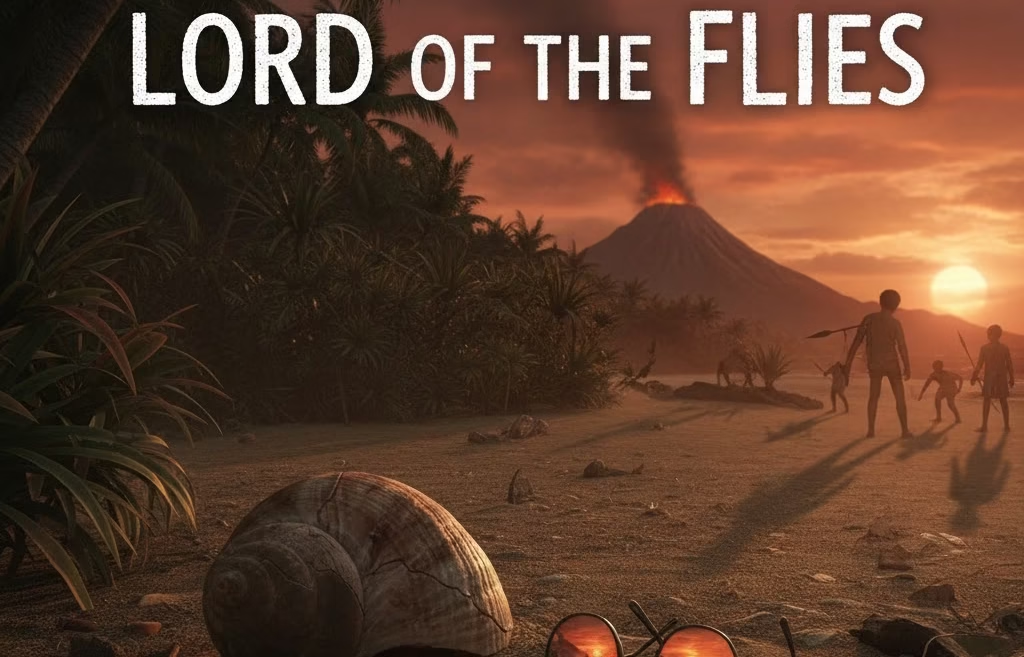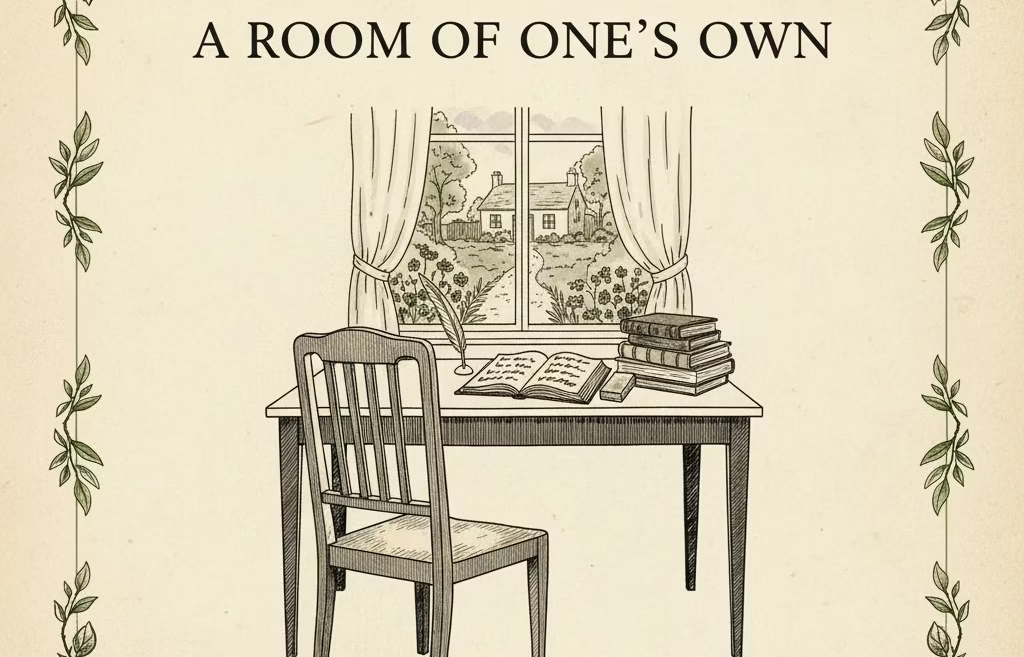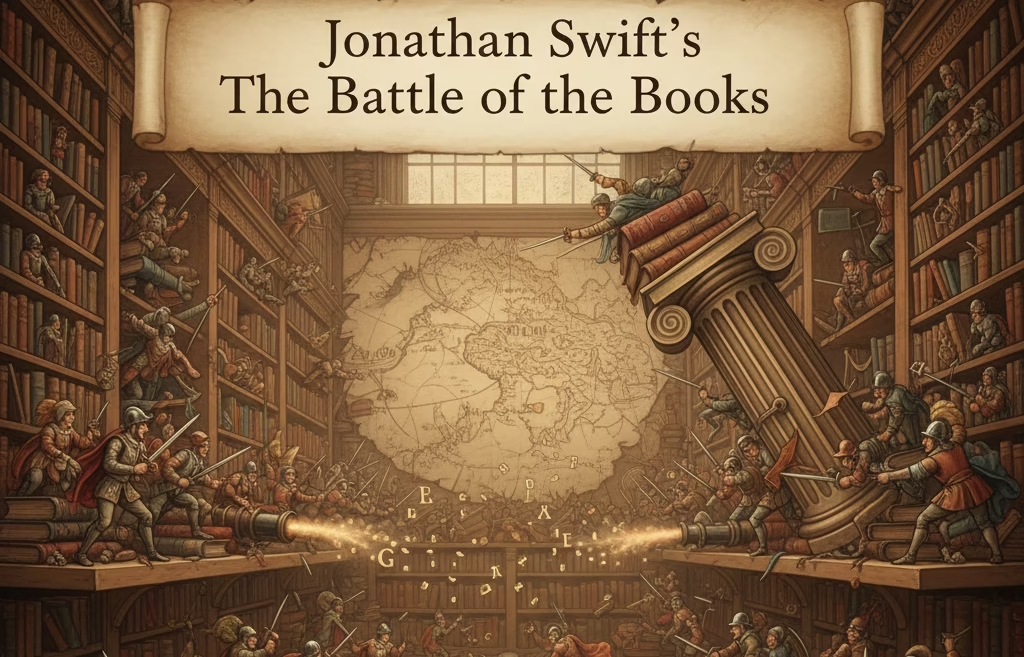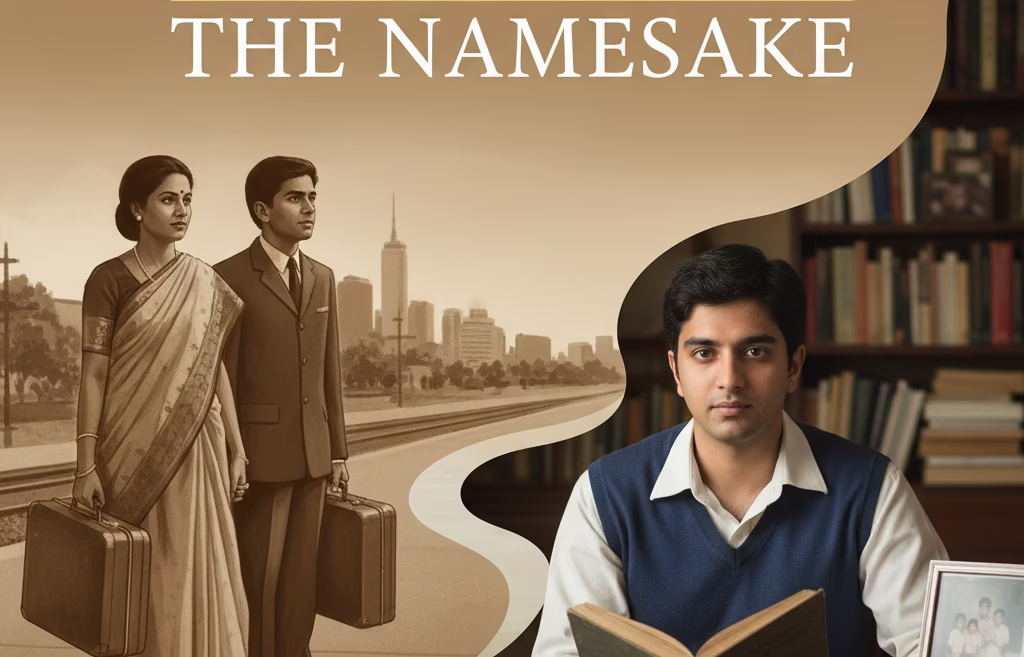Introduction
Arms and the Man by George Bernard Shaw stands as one of the most enduring comedies in English literature, celebrated for its sharp wit, satirical edge, and unflinching realism. First performed in 1894, the play was a breakthrough for Shaw, both artistically and commercially, and remains a staple of classrooms and theatres worldwide. In this in-depth analysis, we explore how Shaw uses humour and satire to challenge the glorification of war and romantic ideals. It also offers a nuanced, human perspective on love, heroism, and social class.
Arms and the Man : Overview and Context
Setting and Background
Set during the Serbo-Bulgarian War of 1885, Arms and the Man unfolds in Bulgaria, against a backdrop of military conflict and social change. The play’s title echoes the opening of Virgil’s Aeneid—“Of arms and the man I sing”—immediately signaling Shaw’s intention to interrogate the myths of heroism and war.
Plot Summary
The story opens with Raina Petkoff, a young Bulgarian woman, whose romantic notions about war are challenged when she shelters Captain Bluntschli, a pragmatic Swiss mercenary fleeing battle. Through a series of comedic misunderstandings and revelations, Raina, her fiancé Sergius, and Bluntschli confront their ideals and illusions about love, honour, and bravery. FOR FULL TEXT
Arms and the Man: Satire and Realism
Satirising War and Heroism
Shaw’s play is a pointed satire of the romanticisation of war. Rather than depicting soldiers as noble and heroic, Shaw presents them as ordinary, sometimes cowardly, and always human. Captain Bluntschli, famously dubbed the “chocolate cream soldier,” prefers food to bullets and survival to glory—a direct challenge to the era’s martial ideals.
“The only men who have no illusions about war are those who have recently been there, and, of course, Mr. Shaw, who has no illusions about anything.”
Shaw’s depiction of war is unvarnished: he exposes its absurdities, the randomness of heroism, and the hollowness of patriotic rhetoric. The play’s humour softens its critique, but the message is clear—war is neither glorious nor noble, but a messy, human affair.
Realism Versus Idealism
Arms and the Man contrasts Raina’s youthful idealism with Bluntschli’s realism. Raina’s beliefs, shaped by romantic literature and opera, are gradually dismantled as she encounters the realities of conflict and human nature. Sergius, too, is revealed as an imperfect, even foolish, figure—his “heroic” cavalry charge was more luck than skill. Also, his personal life is fraught with indecision and hypocrisy.
Arms and the Man Themes
1. Romanticism of War
The play relentlessly mocks the idea that war is glorious. Shaw uses irony and farce to highlight the gap between reality and the romanticized versions of battle that pervaded Victorian society. The character of Bluntschli, with his practical approach to survival, serves as a foil to the empty bravado of characters like Sergius.
2. Love and Marriage
Shaw also satirizes romantic love, exposing the artificiality of courtship rituals and the influence of social expectations. Raina’s journey from infatuation with Sergius to genuine affection for Bluntschli reflects a movement from illusion to authenticity. The play suggests that true love is rooted in honesty and mutual respect, not in grand gestures or social status.
3. Social Class and Mobility
Class distinctions are central to the play’s humor and critique. Characters like Louka, the ambitious servant, and Nicola, the pragmatic manservant, challenge the rigid hierarchies of their society. Moreover, Shaw uses their stories to question the legitimacy of class boundaries and to advocate for a more egalitarian view of human worth.
4. Hypocrisy and Self-Deception
Shaw delights in exposing the hypocrisies of his characters. Whether it’s Sergius’s flirtation with Louka or Catherine’s obsession with appearances, the play reveals how people deceive themselves and others to maintain their self-image. This theme is woven throughout the dialogue, often with biting wit.
Arms and the Man : Character Analysis
| Character | Description | Role in the Play |
|---|---|---|
| Raina Petkoff | Young, idealistic Bulgarian woman. | Moves from romantic idealism to mature realism. |
| Captain Bluntschli | Swiss mercenary, practical and honest. | Embodies Shaw’s realism; challenges Raina’s and society’s illusions about war. |
| Sergius Saranoff | Raina’s fiancé, dashing but foolish officer. | Satirises the “romantic hero”; struggles with his own inadequacies. |
| Louka | Ambitious servant woman. | Challenges class boundaries; represents social mobility and rebellion. |
| Nicola | Manservant, Louka’s fiancé, pragmatic. | Accepts his social position but is aware of its limitations. |
| Catherine Petkoff | Raina’s mother, status-conscious. | Obsessed with social appearances and military glory. |
| Major Petkoff | Raina’s father, amiable but conventional. | Represents the old guard of Bulgarian society. |
Arms and the Man : Stylistic Features
Shaw’s language in Arms and the Man is marked by wit, irony, and a keen ear for social nuance. He uses dialogue to reveal character and to subvert expectations. The play’s structure—three acts, each with escalating misunderstandings—mirrors the gradual unraveling of illusions.
The concept of “register,” or the way language shifts according to context and social status, is particularly important in the play. Shaw manipulates tone and style to highlight class differences and to satirise social conventions.
Arms and the Man : Critical Reception and Legacy
Upon its debut, Arms and the Man was met with both applause and controversy. Some critics accused Shaw of undermining patriotic values and mocking heroism. Yet, the play’s humour and insight soon won over audiences, and it became one of Shaw’s most popular works.
Today, Arms and the Man is recognised as a classic of modern drama, studied for its innovative use of comedy to address serious social issues. Its themes of realism, social critique, and the folly of war remain relevant, ensuring its continued popularity in both academic and theatrical circles. EXPLORE MORE PAGES
Conclusion
George Bernard Shaw’s Arms and the Man is a timeless work that uses comedy to dissect the myths of war and romance. Through its memorable characters, sharp dialogue, and enduring themes, the play invites us to question our assumptions and to embrace the messy, imperfect reality of human life.
Frequently Asked Questions
What is the main message of Arms and the Man?
The play critiques the glorification of war and romantic ideals, advocating for realism, honesty, and the value of ordinary human experience over empty heroics.
Who is the “chocolate cream soldier”?
Captain Bluntschli earns this nickname because he carries chocolates instead of ammunition, symbolizing his practical approach to survival and his rejection of martial bravado.
How does Shaw use humor in the play?
Shaw employs irony, farce, and witty dialogue to expose the absurdities of war, love, and social pretensions, making serious points through laughter.






1 Comment
[…] EXPLORE MORE AUTHORS […]